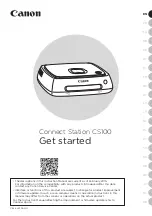
Using the create logicaldrive diskPool command
Note:
In a disk pool, you must create the disk pool first and then the logical drives.
The
create logicalDrive diskPool
command enables you to create a logical drive in a disk pool. You
can create either one of these types of logical drives:
v
Standard logical drive
v
Thin logical drive
A standard logical drive has a fixed capacity that you can define when you create the logical drive. The
standard logical drive reports only the fixed capacity to the host. In disk pools, the logical drive capacity
is distributed across all of the applicable disk drives. You do not need to identify specific disk drives for
the logical drive.
A thin logical drive is an expandable logical drive with both physical capacity and virtual capacity.
Physical capacity is the size of the logical drive at a given time that is currently allocated for writing data.
This size can increase over time. Virtual capacity is capacity reported to the hosts and is the "size" of the
logical drive. Thin provisioning enables you to create logical drives with a large virtual capacity and
relatively small physical capacity, which is beneficial for storage utilization and efficiency. Thin logical
drives can help simplify storage administration because the physical capacity can increase as the
application needs change, without disrupting the application, allowing for better storage utilization.
Keep these guidelines in mind when choosing a name for your logical drive:
v
A logical drive name can consist of letters, numbers, and the special characters underscore (_), hyphen
(-), and pound (#). If you choose any other characters, an error message appears. You are prompted to
choose another name.
v
Limit the name to 30 characters. Any leading and trailing spaces in the name are deleted.
v
Use a unique, meaningful name that is easy to understand and remember.
v
Avoid arbitrary names or names that would quickly lose their meaning in the future.
v
If you choose a logical drive name that duplicates that of another logical drive, an error message
appears. You are prompted to choose another name.
Note:
iSCSI host ports do not support T10PI. If there are one or more iSCSI host ports in your storage
subsystem, a warning appears.
T10PI protection
checks for, and corrects errors that might occur as data is communicated between a
host and a storage subsystem. Enabling this feature for a new logical drive helps make sure that errors
are detected and corrected. To enable T10PI, these conditions must be in place:
v
The storage subsystem must be able to support T10PI
v
The disk pool must be T10PI capable
v
The T10PI premium feature must be enabled
Note:
Your storage subsystem must support T10PI feature.
If any of the host connections on the controllers in your storage subsystem do not support T10PI, the
associated hosts cannot access data on T10PI-enabled logical drives. Before creating a T10PI-enabled
logical drive, make sure that the host connection that you are planning to use supports T10PI.
Dynamic cache read prefetch allows the controller to (optionally) copy additional sequential data blocks
into the cache while it is reading data blocks from a drive to cache. This caching increases the chance that
future requests for data can be filled from the cache. Cache read-ahead is important for multimedia
applications that use sequential I/O. The rate and amount of data that is pre-fetched into cache is
4-42
IBM System Storage DS3000, DS4000, and DS5000: Command Line Interface and Script Commands Programming Guide
Summary of Contents for System Storage DS3000
Page 599: ...Appendix A Examples of information returned by the show commands A 3...
Page 601: ...Appendix A Examples of information returned by the show commands A 5...
Page 603: ...Appendix A Examples of information returned by the show commands A 7...
Page 605: ...Appendix A Examples of information returned by the show commands A 9...
Page 607: ...Appendix A Examples of information returned by the show commands A 11...
Page 609: ...Appendix A Examples of information returned by the show commands A 13...
Page 611: ...Appendix A Examples of information returned by the show commands A 15...
Page 623: ...Appendix A Examples of information returned by the show commands A 27...
Page 625: ...Appendix A Examples of information returned by the show commands A 29...
Page 627: ...Appendix A Examples of information returned by the show commands A 31...
Page 651: ......
Page 652: ...Part Number 00W1466 Printed in USA GA32 0961 05 1P P N 00W1466...
















































